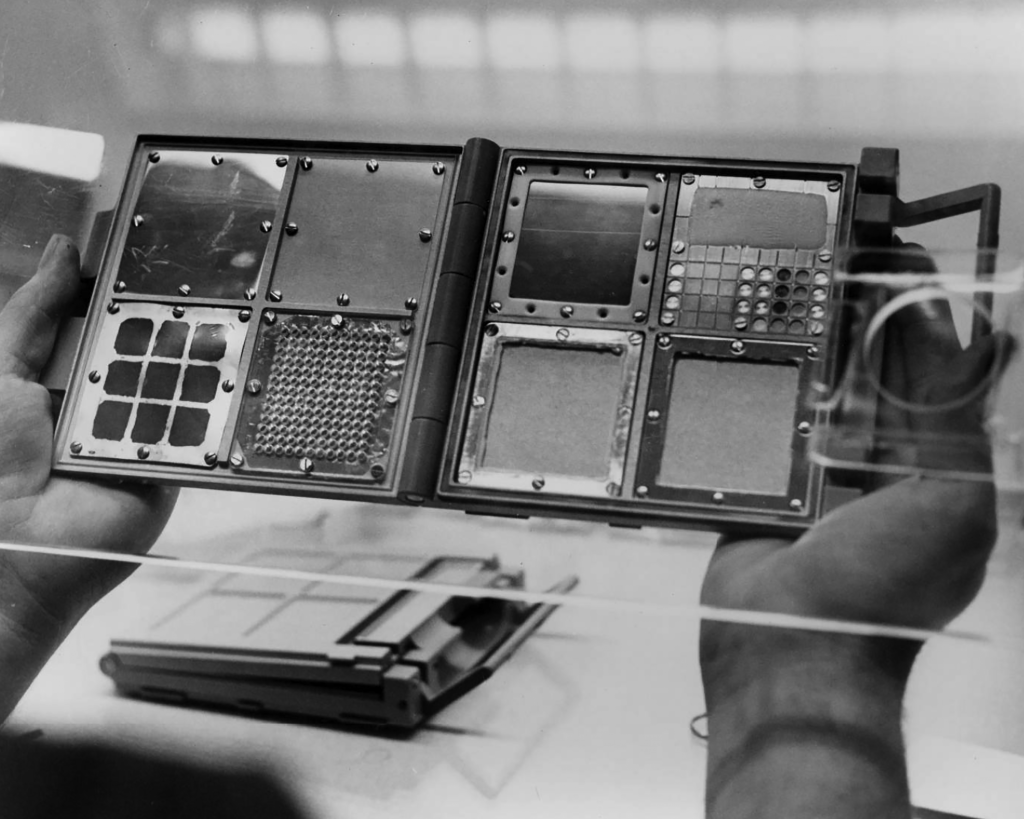
Jamilah Sabur
In the series Mnemonic Alphabet, Sabur presents a minimalist visual abecedarian combining coloured-neon letters with images drawn from nature or human activity, displayed side by side on monochrome panels. Enigmatically illuminating each work, the neon words “karst,” “yangrong,” and “metéōron” are respectively associated with the image of a plaster sculpture with a rhomboid motif; the view of a karstic forest in Cockpit Country, in central Jamaica; and the photograph of an old device used to collect micrometeorites. Karst is a topographic formation resulting from the dissolution of sedimentary rocks such as limestone, dolomite, and gypsum. The Mandarin term yangrong (which translates to “dissolved rocks”) is used to describe karstic landscapes in China. The ancient Greek word metéōron means “high in the air.” The photographs therefore correspond only vaguely to the meaning of the statements made by the neon signs, creating poetic shifts and semiotic dissonances. One letter at a time, Sabur explores the limits of language by pointing out the incapacity of words and images to entirely contain what they aim to define. Like strata accumulated in a rocky protuberance, they hold a memory and a temporality, opening a door to changing and multiple interpretations. Mnemonic Alphabet offers a new planetary language that articulates alternative geographies.
Biography
Jamilah Sabur (born in Saint Andrew Parish, Jamaica; lives in Miami, United States) draws on geology, geography, memory, and language in her exploration of the temporary nature of the world, attending to bodies (geological, human, oceanic, and others) as points of contact between past, present, and future. Her works, which combine performance, photography, installation, and video, are imbued with colonial history, migration issues, and human relationships with the environment. With roots in the idea of being, Sabur’s work probes what has disappeared from our sight in order to unearth buried stories.
